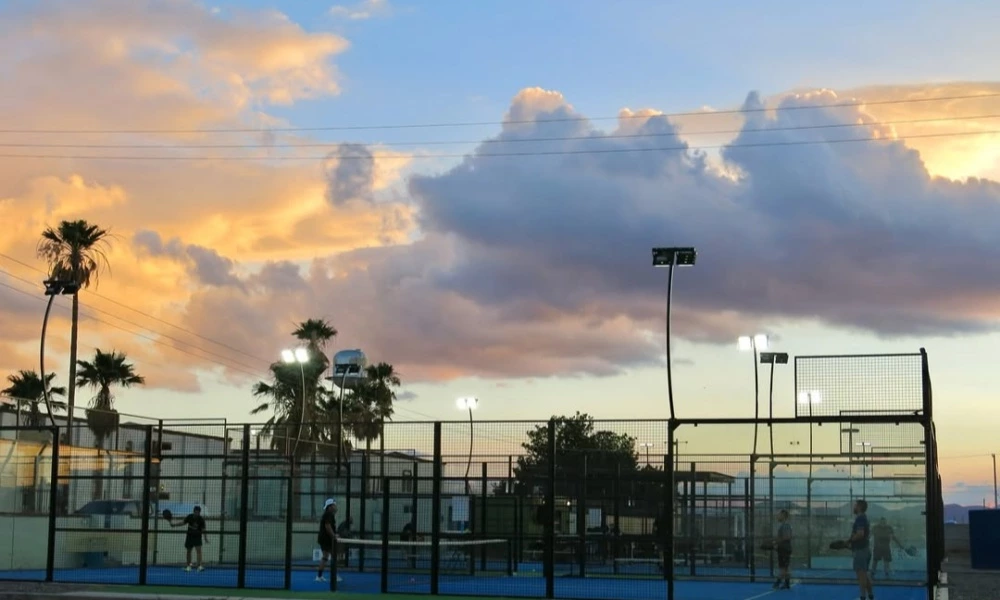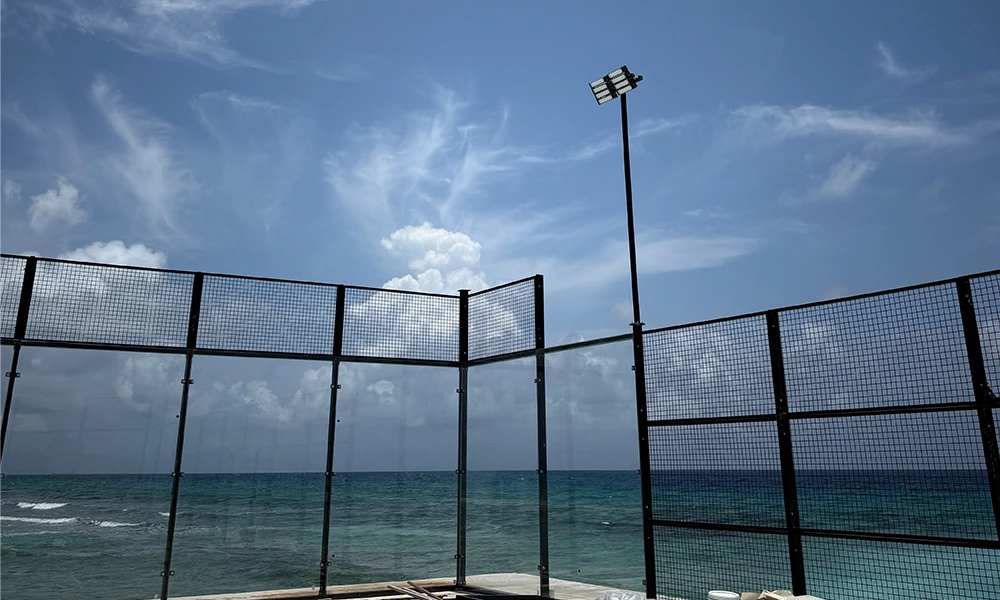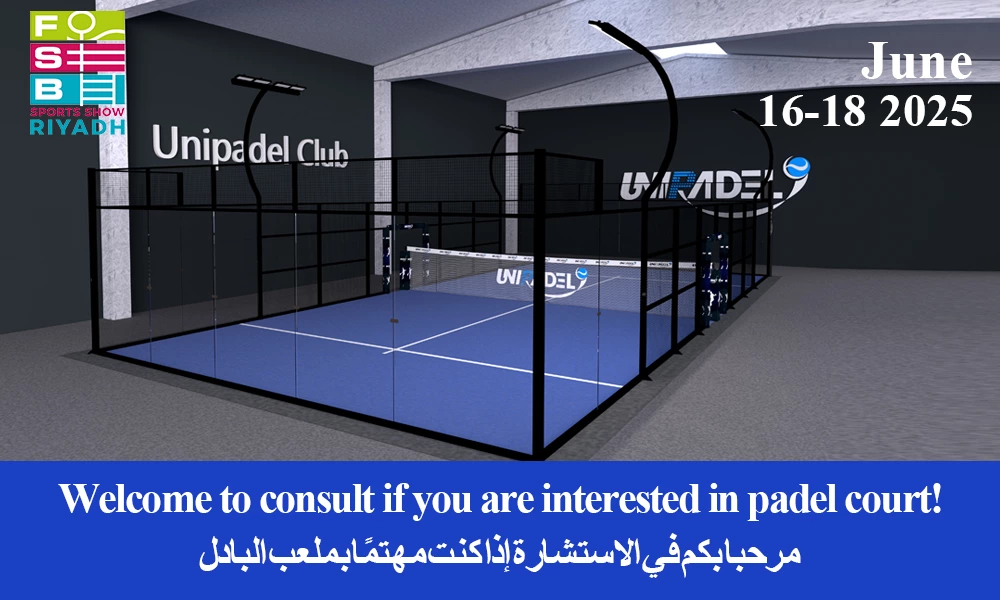Technologie des piliers du terrain de padel
La conception et la construction des terrains de padel comportent de nombreuses exigences techniques uniques, en particulier la conception et la technologie des piliers sont cruciales car elles soutiennent non seulement le filet et la paroi vitrée du terrain, mais affectent également la sécurité du terrain et l'équité du terrain. jeu. Voici les principaux détails techniques des piliers du terrain de padel.
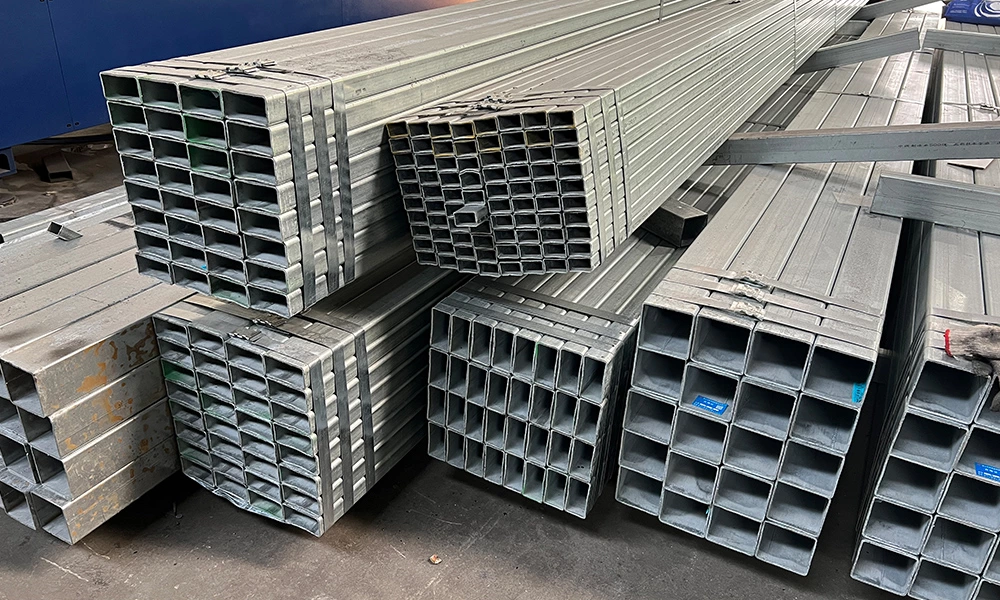
Sélection des matériaux
Les piliers du terrain de padel sont généralement constitués de tuyaux en acier galvanisé à chaud, de pulvérisation de poudre de polyester importée,Nuance d'acier : Q235. Ces matériaux ont une excellente résistance et une excellente résistance à la corrosion et peuvent résister à des environnements d'utilisation en extérieur à long terme. De plus, les matériaux doivent avoir une ténacité suffisante pour résister aux chocs et aux vibrations afin de garantir la stabilité et la sécurité du court.
Spécifications de conception
La conception des piliers du court de padel doit répondre aux normes de la Fédération internationale de padel (FIP). Ces normes incluent la hauteur, le diamètre et l'épaisseur de la paroi des piliers pour assurer la stabilité structurelle de l'ensemble du court. En général, la hauteur des piliers est d'environ 3 mètres afin de soutenir le filet et la paroi en verre et de fournir une hauteur suffisante pour limiter la trajectoire de vol de la balle.
Installation et fixation
L'installation et la fixation des piliers sont l'une des technologies clés. Les colonnes sont généralement fixées à la fondation en béton par des pièces encastrées ou des boulons d'ancrage pour assurer leur stabilité. Lors de l'installation, il est nécessaire de garantir la verticalité et la position précise des colonnes pour garantir l'installation et l'utilisation correctes du filet et de la paroi en verre. Dans le même temps, la connexion entre les colonnes et la fondation doit être imperméabilisée pour empêcher l'humidité de pénétrer et de provoquer de la rouille sur les colonnes ou d'endommager la fondation.
Système de fixation du filet
Les colonnes du court de padel doivent être équipées d'un système de fixation de filet spécial. Habituellement, un système de tension réglable est utilisé pour ajuster la tension du filet selon les besoins. Ces systèmes comprennent généralement des poulies, des cordes et des dispositifs de verrouillage pour garantir que le filet peut maintenir une tension appropriée pendant le jeu et ne sera pas lâche ou trop serré, affectant l'équité du jeu.
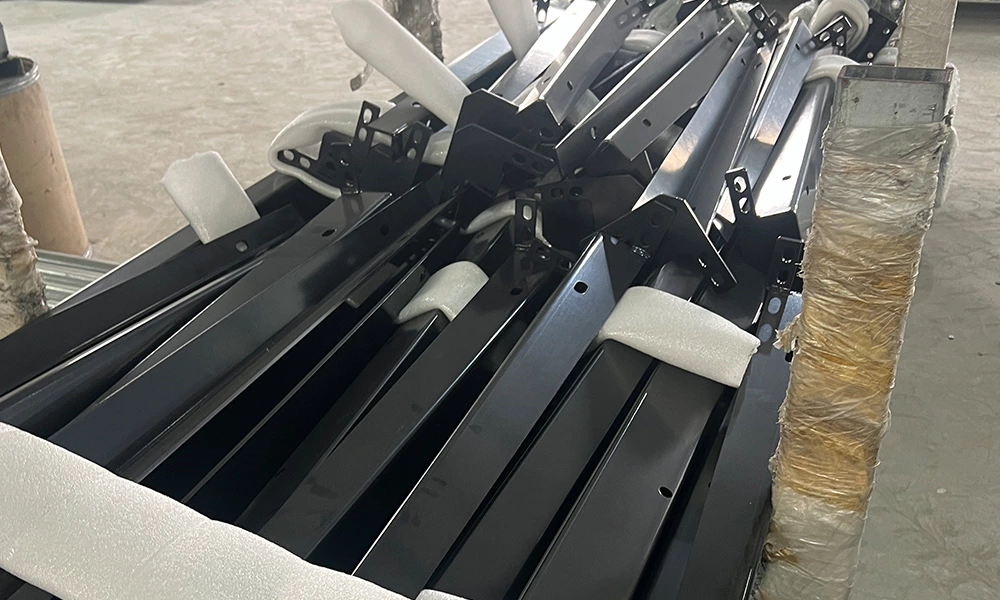
Support de paroi en verre
Les colonnes du court de padel doivent également soutenir la paroi en verre qui entoure le court. La paroi en verre est généralement constituée de verre trempé à haute résistance pour assurer la transparence et la sécurité. Les colonnes doivent fournir un soutien et une stabilité suffisants pour empêcher la paroi en verre de bouger ou de se briser en raison d'un impact ou d'une vibration. Pour cette raison, la connexion entre les colonnes et la paroi en verre est généralement conçue avec des coussins ou des joints en caoutchouc pour absorber les chocs et protéger la sécurité de la paroi en verre.
Tenir compte des facteurs environnementaux
Lors de la conception et de la construction des poteaux du court de padel, les facteurs environnementaux locaux doivent également être pris en compte. Par exemple, les zones à fort vent nécessitent une conception de stabilité renforcée des poteaux (il est généralement conseillé aux clients d'utiliser des courts de padel classiques), tandis que les zones humides ou côtières nécessitent une attention particulière au traitement anticorrosion. Ces détails peuvent améliorer efficacement la durabilité et la sécurité du court.
La technologie des poteaux du court de padel implique le choix des matériaux, les spécifications de conception, l'installation et la fixation, le système de fixation du filet, le support de la paroi en verre et les facteurs environnementaux. L'application complète de ces technologies garantit la sécurité, la stabilité et la durée de vie du court de padel, offrant aux athlètes un environnement de compétition de haute qualité. Grâce à l'amélioration et à l'innovation technologiques continues, la construction de courts de padel répondra de plus en plus aux besoins du sport et aux normes modernes.

